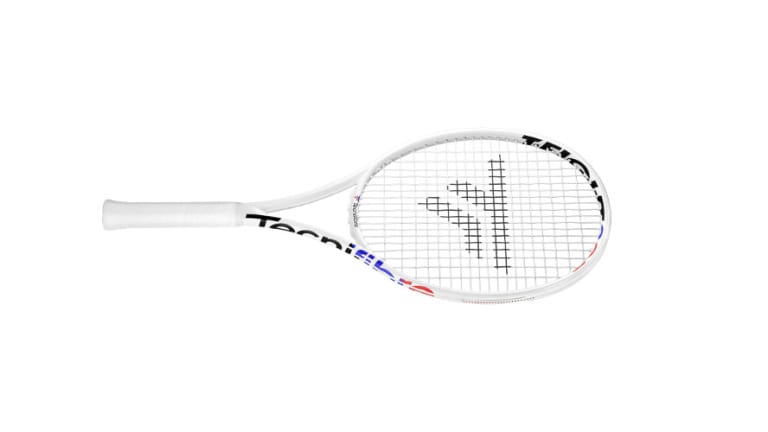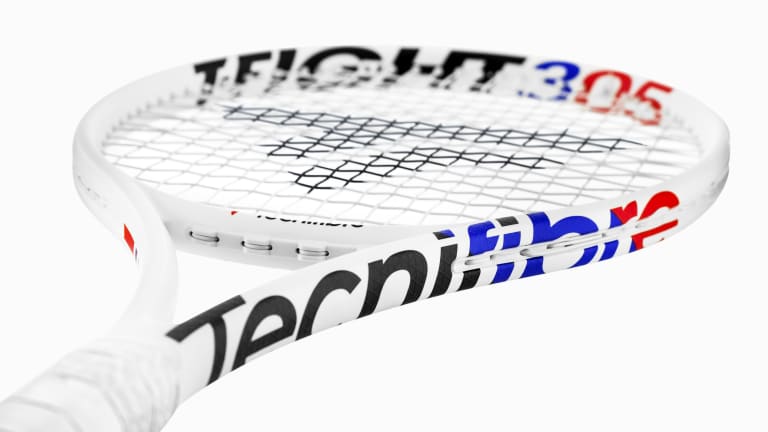SPECS
Price: $239
Head Size: 98 sq. in.
Length: 27 in.
Weight: 11.3 oz.
Balance: 3 pts. HL
Swingweight: 333
RA Rating: 65
Beam Width: 23mm / 23mm / 22.5mm
String Pattern: 18x19
The sharp looking update brings power, precision and improved playability to the court.
Published Jul 23, 2022

SPECS
Price: $239
Head Size: 98 sq. in.
Length: 27 in.
Weight: 11.3 oz.
Balance: 3 pts. HL
Swingweight: 333
RA Rating: 65
Beam Width: 23mm / 23mm / 22.5mm
String Pattern: 18x19
Not long ago, Tecnifibre was viewed as predominantly a string brand. They made good player’s frames wielded by some touring pros, but it certainly qualified as something of a niche label where racquets were concerned. But my how that perception has changed in the last few years. With the current world No. 1s in both men’s and women’s singles and doubles, as well as the top boy’s junior all wielding Tecnifibre racquets, the French manufacturer has established itself as a legitimate dual threat.
At last year’s US Open, Daniil Medvedev became the first Tecnifibre player to win a major singles championship. When he defends his title in a few weeks, he’ll be swinging the brand-new T-Fight ISO 305. Like the player endorsing it, the racquet has evolved into a dynamic blend of power and precision with some flair thrown into the mix. This latest edition might be the most well-rounded one yet.
The ISO in its name stands for ISOFLEX, and it’s the new innovation for this model. First introduced in the TF-X1 line, it’s essentially variable racquet stiffness depending on the location of the frame. Shorter strings tend not to flex as much, so the frame is made stiffer in those regions to encourage more flexing; longer strings have more flex, so the racquet is softer in those areas to limit flexibility. This promotes a wider, more predictable sweet spot that’s also more forgiving on off-center contact.
The other notable design is the RS Section beam shape from the previous T-Fight continues on in this update. Some frames have a square shape to promote feel and control; others have an elliptical shape to produce more power. The RS combines the two for a best of both worlds scenario.
In action the newer and older tech added up to create quite a proficient ball-striker. Impact on ground strokes felt solid and clean with predictable targeting and generous plow-through. With a 3 pts. HL balance, the ISO 305 has a beefy feel for its weight and a considerable 330s swingweight. The racquet dominated contact, whether crunching a ground stroke or simply blocking back a blistering serve. It wouldn’t be fair to label it simply a baseliner’s frame, but I found it to do its best work from that area of the court.
However, this could also be a source of adjustment for some players. A frequent playing partner who uses a 300g frame took a couple of shadow swings with the ISO 305 and couldn’t believe there was only a 5g difference. It doesn’t feel unusually disproportionate, but the balance can require some time to find a comfortable and repeatable swinging rhythm.
This was true on my serve. Initially, I struggled getting my timing down and had trouble hitting my spots; usually the misses going long or wide. After some trial-and-error, though, I learned how best to accelerate the frame and take advantage of the mass in the head. Then I was rewarded with significant pop, good placement and lots of weak replies.

Tecnifibre T-Fight ISO 305
And once acclimated the racquet really feels more substantial than cumbersome. (That said, I’d probably add some weight to the handle to give the frame a more head-light playability). Scramble points and playing solid defense were still on the menu. I particularly appreciated the help the racquet offered when stretched wide; I could extend out on the forehand and send the ball up the line without a big swing or the cleanest contact and still generate enough pace and depth to keep my opponent at bay. It was a definite perk when compared to the exacting nature of more traditional player’s frames.
Directing those shots was made possible by the frame’s unique 18x19 string pattern. Just as its beam is designed to take the best of square and elliptical shapes, this pattern is a compromise between the spin-potential of a 16x19 and the directional control of an 18x20. It proved an accurate hitting platform with a consistent response, allowing me to go after shots and small targets with confidence.
It favored flatter drives and slices over heavy topspin, but it was still capable of bending the ball on a tight angle, hitting a looping groundie or getting good jump on a kick serve. It’s also a pattern that could work well with a variety of string setups. I enjoyed the performance with a full bed of a low-tension poly—Tecnifibre Black Code 17g at 47 lbs.—but could easily envision it working well with hybrid configurations.
Up at net the frame’s sturdy backbone stood up to speeding incoming traffic, as well as stuck volleys with pace and depth. As with ground strokes, it was perhaps a little trickier to maneuver than some, but mostly manageable with top-notch command. The juiciness of the frame made more playful feel and touch shots a little more challenging. I think this aspect would improve greatly with repetitions—and a user with softer hands—but I noticed more stumbles the shorter the stroke. I hit some great topspin lobs with the racquet; drop shots and volleys were more of a mixed bag.
The one area that didn’t always gel for me was the racquet’s firmness. The RA has been lowered, but it still felt stiff at times. The response was crisp and comfortable in the sweet spot, but never could reach plush levels. Granted, it’s not as flexible or arm-friendly as the frames I typically play with, so the feedback was more noticeable when the ball was struck off-center. It wasn’t overly harsh or resulted in any lingering joint pain or soreness, but my hand knew it when I caught a hot shot towards the tip or throat of the frame.
The last thing I’ll mention is the first thing many point out: the racquet’s appearance. As with Tecnifibre’s other lines, the T-Fight has adopted a full white base with black, blue and red branding applying the accents. While looks are in the eye of the beholder, and hardly indicative of a racquet’s worth, the consensus was this one’s a stunner.
But the T-Fight ISO 305 is more than just a pretty face. It’s got brains and plenty of brawn to go along with its attractive exterior. It should fit right at home with accomplished players of all styles looking for a stable, predictable frame that produces a heavy ball.
Keep an eye on this Tecnifibre. They might be on to something.